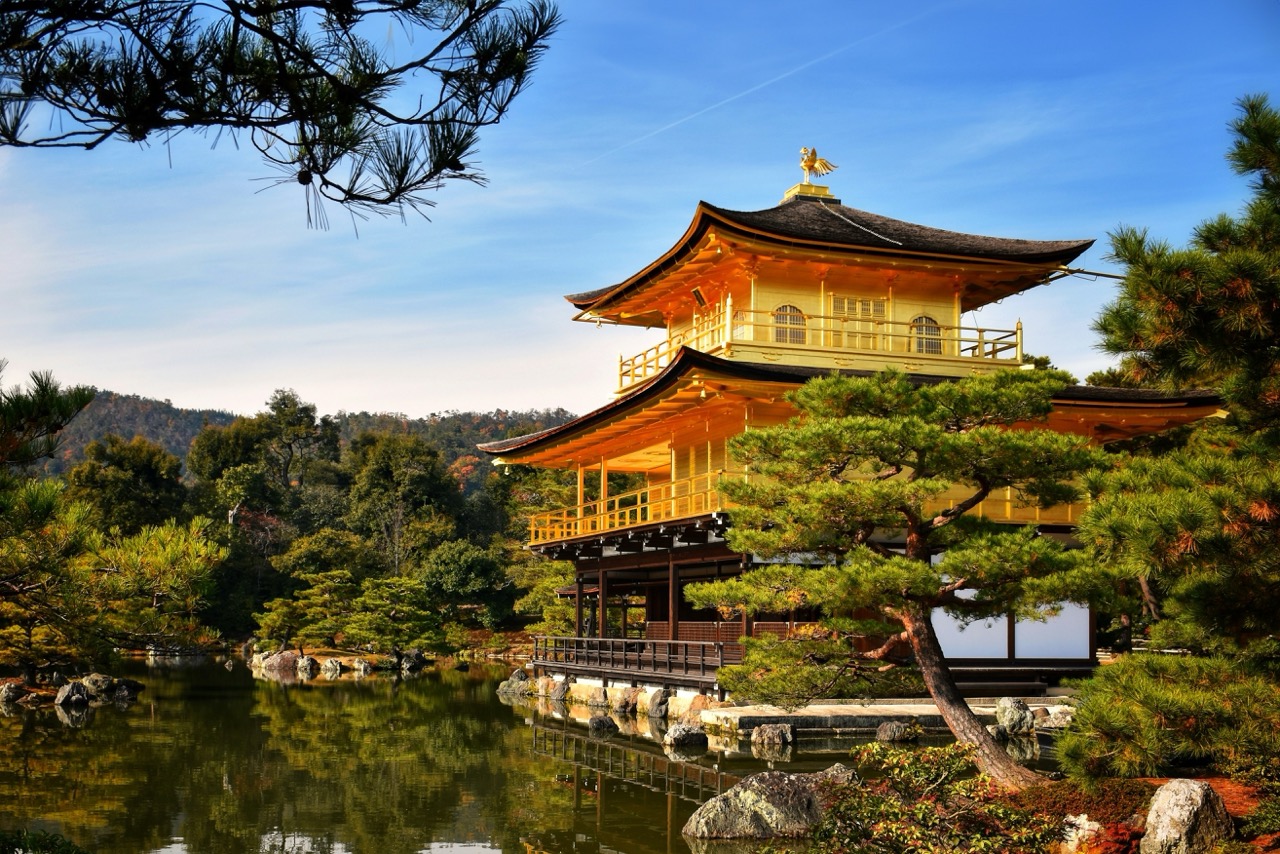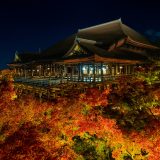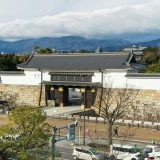Kinkakuji Temple, as its name suggests, is a representative tourist attraction in Kyoto that continues to attract visitors with its shining golden beauty. This historic temple is known not only for its magnificent exterior, but also for the rich history and culture behind it.
| Official Name | Rokuonji Temple |
| Common Name | Kinkakuji Temple |
| Year of Establishment | Built in 1397 (Oei 4), later destroyed by fire Rebuilt in 1955 |
| World Heritage | Registered as a World Heritage Site in 1994 as “Cultural Property of Ancient Capital Kyoto |
| How to get there | City bus ( 12/59/204/205/M1 ), get off at ” Kinkakuji-michi ” and walk 2 minutes. |
| Parking lot | 250 cars *There is a charge for parking. |
| Hours of visit | 9:00 ~ 17:00 (open all year round) |
| Admission fee | Adults (high school students and older): 500 yen Elementary and junior high school students: 300 yen |
| Location of the museum | 1 Kinkakuji-cho, Kita-ku, Kyoto, 603-8361, Japan |
| TEL: 075-461-0013 | 075-461-0013 |
| Official website | https://www.shokoku-ji.jp/kinkakuji/ |
Table of Contents
Features of Kinkakuji Temple
- Built by Ashikaga Yoshimitsu
- Official name is Rokuonji Temple
- The collaboration of the Golden Pavilion and the pond is fantastic and popular
Kinkakuji Temple was built by Ashikaga Yoshimitsu during the Muromachi period (1333-1573). The temple is widely known as “Kinkakuji” because of its brilliant golden exterior. In reality, this gold color is pure gold leaf covering the top of the building, and its opulence overwhelms visitors.
The history of Kinkakuji Temple dates back to 1397, when Ashikaga Yoshimitsu built the temple as his own residence. Later, after Yoshimitsu’s death, the mansion was converted into a temple. However, it was destroyed by arson in 1950, and the building that can be seen today was rebuilt in 1955. Throughout its long history, Kinkakuji overcame many trials and tribulations, and today is listed as a World Heritage Site.
Highlights
The Golden Pavilion
The main attraction of Kinkakuji Temple is the Golden Pavilion (Shariden). The Kinkaku is a three-storied gold-leafed tower with a gorgeous appearance that is overwhelming to the eye.
The first floor is a shinden-zukuri, the second floor is a shoin-zukuri, and the third floor is a Zen Buddhist temple, combining different architectural styles and showing the advanced construction techniques of the time. Inside the Golden Pavilion are statues of Shakyamuni Buddha, Amida Buddha, and others.
The Golden Pavilion is so famous that it is commonly referred to as the Kinkakuji Temple!
Kagamiko Pond
Kagamiko Pond in front of the Golden Pavilion serves as a beautiful mirror reflecting the Golden Pavilion. The pond is filled with islands of various sizes, and visitors can enjoy the scenery of the four seasons.
The contrast between the Golden Pavilion and the autumn leaves is especially beautiful during the autumn foliage season, attracting many tourists!
Rikusyu-no-matsu (Pine Tree of Land Boat)
Located on the north side of the Golden Pavilion, the Rikusyu-no-matsu is a 600-year-old pine tree. It is named after its branches, which spread out horizontally like a boat.
It is one of the representative landscapes of Kinkakuji and has been depicted in many paintings and photographs.
What are popular souvenirs?
Various souvenirs using gold leaf are popular around Kinkakuji Temple. From sweets with gold leaf to crafts with small pieces of gold leaf on them, there are many wonderful items you can bring the beauty of Kinkakuji home with you!
- Rikaen ” branded with the Golden Pavilion
- Kinkaku-no-hana “, a bun depicting Kinkakuji Temple
- Kinkaku-ji’s original sweets ” Meisaku Kinkaku” (famous confectionery )
How to get there
Access to Kinkakuji Temple from Kyoto City is very convenient. It takes about 40 minutes from Kyoto Station by city bus, and several bus routes are available. Cabs and rental bicycles are also available.
If you choose to shave by bus, you can take Kyoto City Bus routes 12, 59, 204, 205, or M1, and get off at the ” Kinkakuji-michi ” stop, which is about a 2-minute walk from the temple.
Recommended time to visit
Kinkakuji Temple is beautiful throughout the year, but it is especially spectacular during the fall foliage season and the snow-covered Kinkakuji Temple in winter!
The autumn leaves in autumn contrast beautifully with the golden color of the Golden Pavilion, and the snow-covered temple in winter gives a sense of tranquility and solemnity.
Tips to enjoy Kinkakuji more
When visiting Kinkakuji, it is recommended to visit early in the morning or late in the afternoon. During this time of the day, the temple is relatively uncrowded and you can enjoy a quieter time. There are also many other nearby attractions such as Ryoanji Temple andNinnaji Temple, so it is recommended to visit the surrounding temples in conjunction with your visit to Kinkakuji Temple.
The official website of Kinkakuji Temple provides live images of the temple grounds, which are updated every three minutes. Please make use of the live images to grasp the crowded condition of the temple!
Video of Kinkakuji Temple
Kinkakuji Temple, with its seasonal beauty, has an unforgettable charm once you visit. Please enjoy the charm of Kinkakuji Temple to the fullest and create wonderful memories!



